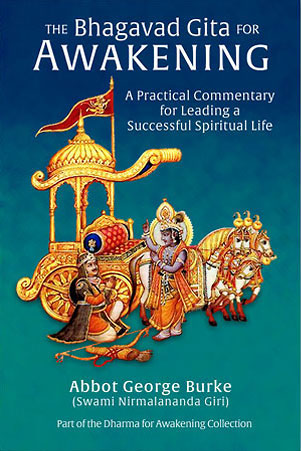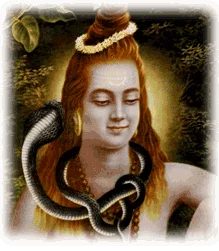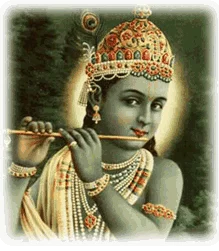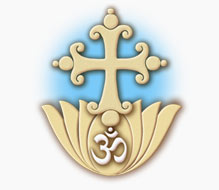
We are in the final chapter of the Gita, so Vyasa, assuming that we have listened and learned the basic facts regarding action, now goes into the subject on a more detailed level, intending that when we have assimilated these teachings we will be ready to successfully engage in life’s actions like Arjuna.
Five factors of action
Learn from me these five factors for the accomplishment of all actions, declared in the Sankhya (18:13).
This is one of those verses wherein those that adhere to philosophies other than Sankhya put in words more to their liking such as “the scriptures” or “the wise.” But the word is Sankhya. Karana, which can be translated “factor,” also means an instrument or a cause. All three meanings apply in this verse. Now here are the five:
The body, the doer, the functions of various kinds, the various distinct activities, and the divine overseer as the fifth. Whatever action a man performs with his body, speech, or mind–either right or wrong–these are its five factors (18:14-15).
So every single action involves five elements. An analysis of them will reveal the extremely complex nature of any action, and how it can be that the simplest action can bind us with the bonds of karma.
- The adhishthanam, the seat or abode–of what? Of all the subtle bodies, including the mind and intellect, and ultimately the abode of the Self. This being so, far more than the physical body is involved here. Five bodies come into the picture, in fact.
- Karta, the Doer. Since we are consistently told by the Gita that the Paramatman and the jivatman never engage in action, it is the ego-sense that is the real doer.
- Karanam: Bodily “instruments” such as the hands, feet, etc., by which the body itself acts in relation to outside objects or situations.
- Vividhashcha prithakcheshta, the many actions or functions of the pranas within the physical and subtle bodies. Also anything that takes place internally.
- Daivim: In the Upanishads the devas are said to preside over the senses, even to control them. This idea has doubtless come about through considering the individual body as a reflection or model of the Cosmic Body in which the gods are the controlling powers. However that may be, Krishna (Vyasa) does not say devas, but daivim–that which is of the quality or capacity of the devas. Since “deva” literally means “shining one,” the idea of daivim in this verse is that which illumines the experiences of the body, in other words, the senses–both as instruments and as powers of perception.
No wonder we are bound up in the net of our actions–even the simplest and most innocent ones! There are no small or insignificant acts. Since every single deed involves a tremendous amount of instruments, it also produces effects on those instruments, which include our mind and heart. Is it any wonder, then, that Krishna has already said: “This divine illusion [maya] of mine made of the gunas [gunamayi] is difficult to go beyond” (7:14)?
The dream and the dreamer
This being so, he who sees himself as the actual doer does not really see, because he does not have a perfect (complete) understanding (18:16).
Akritabuddhhitvan means to have an incomplete, imperfect, or unperfected understanding. An important implication here is that the individual is capable of perfecting his understanding, and therefore he must. But until he does so, he will misunderstand himself and the world around him. For him, all his experiences and those involved in them are only a dream.
The dreamlike nature of the world is perceived the world over, though it is a doctrinal principle only in Sanatana Dharma–a revealing fact. Even poets such as Edgar Allan Poe (“All that we see or seem is but a dream within a dream.”) and Shelley (“Lift not the painted veil which those who ‘live’ call ‘Life.’”) wrote about the dream-nature of the world.
As long as we are asleep and dreaming we cannot really see the truth about action. But we can listen to those who are awake and receive their understanding and act accordingly. Even more, the truly awake can show us the way to our own awakening, the way of yoga. It is only through meditation that our understanding can truly be perfected, for in their highest reaches understanding and intellect (buddhi) are purely consciousness. And only yoga works with consciousness. All other things, however beneficial, affect only the lesser parts of our being.
The purified consciousness
He whose state of mind is not egoistic, whose intellect is not tainted, even though he slays all these people, he does not slay, neither is he bound (by karmic consequences) (18:17).
He who transcends the condition of forming karmic bonds is one whose very state of being–bhava, consciousness, outlook, attitude, and interior disposition–is nahamkrito, not partaking of ego (ahankara) in any way. That is, he is established in the Self which is eternally free from ego. It is important to realize that he did not rid himself of ego; rather, he established himself in his true swabhava of the divine Atman that has never even been touched by ego. Having gone beyond the ego, he had no need to do anything in relation to it, for it was always only a shadow, only a false appearance.
The intelligence/intellect (buddhi) of such a person is na lipyate–not tainted. Lipyate means “befouled” or “besmeared.” But he is not even slightly touched by egoism. He no longer dreams that he acts as an entity separate from Brahman or that, separate from Brahman, he reaps the consequences of those acts. After his enlightenment, Buddha was walking down the road and met a Brahmin who asked him: “Who are you?” He simply answered: “I am awake,” and kept on walking. Krishna is speaking of one who, like Buddha, has awakened into the reality of the Self, leaving the mirage of ego far behind.
Having abandoned the realm of ego, or relative existence seemingly separate from Brahman, he neither acts nor is bound by action. He cannot be, any more than Brahman can. It is a matter of true nature.
The three inciters to action
We have been told about the five factors of all action. Now we are going to be told about the three things that move us to action–or to the dream of action–and the three things that carry out the motivation.
Knowledge, the known and the knower are the threefold impulse to action. The instrument, the action and the doer are the threefold constituents of action (18:18).
Perception, perceiving, and the perceiver–these three incite to action. It is all in the realm of objective consciousness. Perception impels us to action mostly from the impulse to avoid unpleasant experience and to gain pleasant experience. Perception is also internal, so there is also the avoidance of unpleasant feelings and the desire for pleasant feelings. It is very much the same with the objects of perception for which we have an attraction (raga) or aversion (dwesha). The perceiver meant here is not the ultimate perceiver, the Self, but the mind/intellect which also acts on the pleasure/pain, like/dislike, good/bad principles, and other dualities.
The three basics of action listed here are karanam, karma, and karta. Karanam is the instrument or means of action. This has been covered in detail in the previous section. Karma is the act itself, used here to mean doing–the expenditure of will and energy to accomplish something. Karta means the agent, or doer–again, in this instance meaning the whole body/mind/ego complex, and not the ultimate Self.
Just see what is involved in understanding karma. What then to say of Karma Yoga? No wonder that Swami Sivananda Hridayananda (“Doctor Mother”) told a group that came to see her at the Sivananda Yoga Vedanta Center in Chicago: “I have known only one real karma yogi: Swami Sivananda.”
No surprise to us who have come this far in the Gita!
Read the next article in the Bhagavad Gita for Awakening: Knowledge, Action, Doer, and the Three Gunas







